Parte 2:Razones Por Las Que A Los Japoneses Jamás Se Le Va A Dar Bien El Inglés: Sean Bienvenidos,


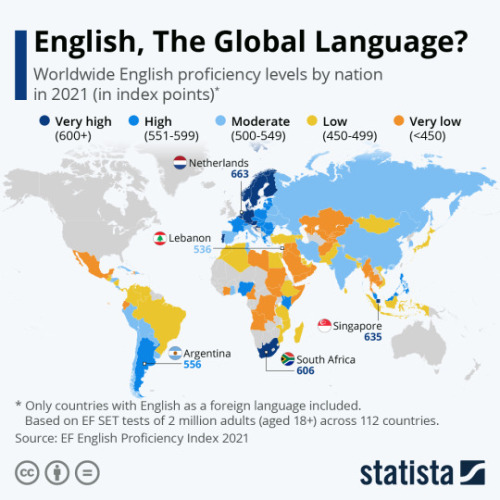
Parte 2:Razones por las que a los japoneses jamás se le va a dar bien el inglés: Sean bienvenidos, japonistasarqueológicos, a una nueva entrega, en esta ocasión hablamos del inglés en Japón, una vez dicho esto pónganse cómodos qué empezamos. - Por la que a los japoneses les cuesta el inglés más de una te sorprenderá, los japoneses para poder aprender inglés desde cero les lleva alrededor de 500 horas alcanzar el nivel principiante; sin embargo, se necesitan unas 250 horas para aprender coreano o indonesio al mismo nivel principiante. Una de las razones por las que los japoneses no son buenos en inglés es debido a la pronunciación, esto es un hecho. - La estructura gramatical del inglés es: SVO (sujeto-verbo-objeto) donde el verbo va primero, mientras que en japonés, SOV (Sujeto-Objeto-Verbo) donde el verbo va al final. Además, la estructura de las oraciones difiere entre el inglés y el japonés, el inglés es muy estricto en cuanto al orden de las palabras. En japonés utilizamos unas 120 palabras en un minuto de conversación normal. El inglés emplea aproximadamente 1,5 veces más palabras, razón por la cual los japoneses sienten que hablan inglés más rápido. Por ejemplo, la palabra japonesa “personalidad” tiene tres fonemas. Cuando se trata de inglés, necesitamos cinco fonemas: pa/so/na/li/ti, y para transmitir la misma información, necesitamos hablar más rápido. La razón por la que a los japoneses les resulta difícil escuchar y hablar inglés es probablemente porque se les exige que usen habilidades que normalmente no emplean. パート2:日本人が決して英語が得意にならない理由:日本の考古学者たちよ、新しい回へようこそ!今回は日本の英語について話す。 - なぜ日本人は英語が苦手なのか?日本人がゼロから英語を学んで初級レベルに達するには約500時間かかるが、韓国語やインドネシア語を学んで同じ初級レベルに達するには約250時間かかる。日本人が英語を苦手とする理由のひとつに発音があるが、これは事実である。 - 英語の文法構造はSVO(Subject-Verb-Object)で動詞が先に来るのに対し、日本語はSOV(Subject-Object-Verb)で動詞が最後に来る。また、文の構造も英語と日本語では異なり、英語は語順に非常に厳しい。日本語の場合、通常の会話で1分間に使う単語は約120語。英語はその約1.5倍の単語を使うので、日本人は英語を話すのが早いと感じるのです。例えば、日本語の「パーソナリティ」という単語には3つの音素がある。それが英語になると、パ/ソ/ナ/リ/ティの5つの音素が必要になり、同じ情報を伝えるためには、より速く話す必要がある。日本人が英語を聞くのも話すのも難しいと感じるのは、普段使わない能力を要求されるからだろう。 - 今後の記事でお会いできることを楽しみにしています。 Part 2: Reasons why the Japanese will never be good at English: Welcome, Japanese archaeologists, to a new instalment, this time we are talking about English in Japan, so make yourselves comfortable and let's get started. - Why the Japanese have a hard time with English more than one will surprise you, it takes the Japanese around 500 hours to learn English from scratch to reach beginner level; however, it takes around 250 hours to learn Korean or Indonesian to the same beginner level. One of the reasons why Japanese people are not good at English is because of pronunciation, this is a fact. - The grammatical structure of English is: SVO (Subject-Verb-Object) where the verb comes first, while in Japanese, SOV (Subject-Object-Verb) where the verb comes last. Also, sentence structure differs between English and Japanese, English is very strict about word order. In Japanese we use about 120 words in one minute of normal conversation. English uses about 1.5 times as many words, which is why Japanese people feel they speak English faster. For example, the Japanese word "personality" has three phonemes. When it comes to English, we need five phonemes: pa/so/na/li/ti, and to convey the same information, we need to speak faster. The reason why Japanese people find it difficult to listen to and speak English is probably because they are required to use skills they do not normally use. - I hope you like it and see you in future posts, have a good week.
More Posts from Noticiasarquelogicasjaponesas and Others







Sean Bienvenidos, japonistasarqueologicos a una nueva entrega sintética, en la cual mencionaremos una de las muchas obras de Hiroshige, del cual ya hablamos en una publicación, pero no publique ninguna obra, ahora llego el momento dicho esto pónganse cómodos que empezamos. - Características Año: 1852 - 1858 Título: Itsukushima in Aki Province. Estilo: Ukiyo-e - Espero que os haya gustado os deseo una feliz semana y nos vemos en próximas publicaciones de Japón. - ようこそ、ジャポニスタサルケオロジコスの新しい合成配信へ。その中で、広重の多くの作品の一つを紹介します。その作品については、すでに出版物で話していますが、私は作品を出版していません。今、その時が来ました。そう言って、あなた自身を快適にして、始めましょう。 - 特徴 年:1852年~1858年 タイトル:安芸国厳島(あきこくいつくしま 様式:浮世絵 - お気に召していただけたなら幸いです。今週もよろしくお願いします。また、今後の日本の出版物でお会いしましょう。 - Welcome, japonistasarqueologicos to a new synthetic delivery, in which we will mention one of the many works of Hiroshige, of which we already spoke in a publication, but I did not publish any work, now the time has come, having said that, make yourselves comfortable and let's begin. - Features Year: 1852 - 1858 Title: Itsukushima in Aki Province. Style: Ukiyo-e - I hope you liked it, I wish you a happy week and see you in future Japan publications.




La primera bomba es Fat Man y la segunda es Little Boy estos dos juguetes del tío Sam causaron unas heridas que jamás sanaran al pueblo japones. ¡NO HA LA GUERRA !
-
The first bomb is Fat Man and the second is Little Boy. These two toys of Uncle Sam caused wounds that will never heal the Japanese people. NO WAR!
-
最初の爆弾はファットマン、二番目はリトルボーイ、この2つのアンクルサムおもちゃは日本国民に決して癒すことのない傷を与えました。戦争はありません!



Sean bienvenidos japoniatasarqueológicos a una nueva entrega, en esta ocasión os traigo otra noticia de arqueología de Japón la cual nos trasladaremos al periodo kofun o protohistórico (250 /592d.c) dicho esto Comencemos. - El túmulo funerario se encuentra rodeado de una doble fila de piedras, dicho túmulo se llama Koyasu y se localiza en Nakagawara Isenara, data de hace 1300 a 1400 años y pertenece al kofun tardío o protohistórico. Dicho conjunto arqueológico dispone de unos, 3600 kilómetros cuadrados aproximadamente, en la parte excavada dispone de 12 m y 14,8 de anchura se ha localizado debido a la construcción de la autopista Shin Tomei, que se localiza al margen derecho de Suzukawa al pie de la montaña Oyama se han encontrado tres dientes humanos. - Las piedras de dicho túmulo tienen distinta cantidad y tamaño, probablemente el túmulo central pertenecería a un jefe de un clan tribal y algún y el otro túmulo de menor tamaño pertenecería, pues, a alguien de la misma clase social, es decir que tuviera casi el mismo nivel social o un poco inferior al de la persona principal. - ¿De qué personaje histórico se trata? En próximas publicaciones hablaremos de este tema y aclararemos dudas sobre ellos dicho esto espero que les haya gustado y nos vamos en próximas publicaciones historia, arqueología de Japón hasta la próxima. - Welcome from Japan to a new installment, this time I bring you another archeology news from Japan which we will move to the kofun or protohistoric period (250 / 592 AD) with that said Let's start. - The burial mound is surrounded by a double row of stones, said mound is called Koyasu and is located in Nakagawara Isenara, dates from 1300 to 1400 years ago and belongs to the late or protohistoric kofun. This archaeological complex has approximately 3,600 square kilometers, in the excavated part it has 12 m and 14.8 in width, it has been located due to the construction of the Shin Tomei highway, which is located on the right bank of Suzukawa at the foot of the Oyama Mountain, three human teeth have been found. - the stones of said tumulus have different quantity and size, probably the central tumulus would belong to a chief of a tribal clan and some and the other smaller tumulus would belong, well, to someone of the same social class, that is to say, who had almost the same social level or a little lower than the main person. - What historical character is it? In future publications we will talk about this topic and clarify doubts about them, having said that, I hope you liked it and we will go in future publications history, archeology of Japan until next time.

Sean bienvenidos japonistaarqueológicos a una nueva entrega de arqueológica japonesa dicho esto pónganse cómodos que empezamos. En esta ocasión, nos trasladamos a las ruinas de Saigu que están localizadas en la prefectura de Mie además es un sitio histórico nacional en Meiwa-cho, en el cual vivió Saio, la princesa que sirvió a Ise Jingu en lugar del emperador. - Esto lo sabemos gracias a los restos arqueológicos se, cree que se construyó entre el período Nara tardío y el período Heian temprano, se componen de cuatro edificios. - Estén atentos ya que les iré informando de todo lo que se vaya sabiendo,¿ Conocían este lugar? Espero que os haya gustado y nos vemos el día 22 nuevamente, os deseo un cordial saludo. - 日本の考古学の新しい記事へようこそ。 今回は、伊勢神宮に仕えた皇女・斎王が住んでいた、三重県明和町にある国の史跡「斎宮跡」に移動しました。 - 考古学的遺跡のおかげで、奈良時代後期から平安時代初期に建てられたと信じられており、4つの建物で構成されています。 - わかっていることはすべてお知らせしますので、お楽しみに、このサイトをご存知でしたか? 気に入っていただけて、22日にまたお会いできることを願っています。 - Welcome japonistasarqueológicos to a new installment of Japanese archeology, having said that, make yourself comfortable, we're starting. This time, we moved to the Saigu Ruins, which is located in Mie Prefecture and is a national historic site in Meiwa-cho, where Saio, the princess who served Ise Jingu instead of the emperor, lived. - We know this thanks to the archaeological remains, I know, it is believed that it was built between the late Nara period and the early Heian period, it is made up of four buildings. - Stay tuned, since I will inform you of everything that is known, did you know this site? I hope you liked it and see you again on the 22nd, I wish you a cordial greeting.
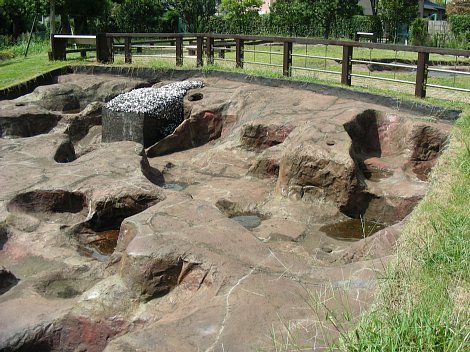





Sean bienvenidos japonistasarqueológicos, a una nueva entrega de arqueología japonesa, una vez dicho esto pónganse cómodos que empezamos. - En esta ocasión nos trasladamos: Al Museo del Parque Histórico Tobinodaique se localiza en la ciudad de Funabashi, prefectura de Chiba,los restos arqueológicos son del periodo Jomon y hay una 200 aproximadamente, en lo que respecta a las ruinas. Además las ruinas de Tobinodai tienen unos 8.000 años de antigüedad y son del período temprano.¿Conocían este yacimiento? - Espero que os haya gustado y nos vemos en próximas publicaciones, que pasen una buena semana. - 日本の考古学者たちよ、ようこそ。そう言われたら、くつろいで、さっそく始めましょう。 - 今回は移動します: 飛ノ台歴史公園博物館へ 千葉県船橋市にある飛ノ台歴史公園博物館は、縄文時代の遺跡で、遺跡としては約200件あります。 また、飛ノ台遺跡は約8,000年前の前期遺跡である。 - 気に入っていただけたでしょうか、また今後の記事でお会いしましょう、良い一週間をお過ごしください。 - Welcome, Japanese archaeologists, to a new installment of Japanese archaeology, and once that's been said, make yourselves comfortable and let's get started. - This time we move on: To the Tobinodaique Historical Park Museum is located in Funabashi City, Chiba Prefecture, the archaeological remains are from the Jomon period and there are about 200 of them, as far as ruins are concerned. In addition, the ruins of Tobinodai are about 8,000 years old and date back to the early period. - I hope you liked it and see you in future posts, have a nice week. Sources: Images owned by the museum Museum:Hinodai Shell Midden Museum. 出典:博物館所蔵の画像 博物館:日野台貝塚資料館




Sean bienvenidos a una estrega en esta ocasión, os voy a hacer un pequeño resumen de la actualidad en el país del sol naciente y en este caso, nos trasladamos a Hokkaidō (ほっかいどう) Las fuertes nevadas van desde el norte de Japón hasta el oeste de Japón y las fuertes nevadas desde Hokkaido principalmente a lo largo de las montañas de Kyushu se espera que la nieve continúe hasta el dia 25. - Espero que os haya gustado y nos vemos en próximas publicaciones de historia, arqueología entre otros temas del sol naciente. - この機会に初演へようこそ。私はあなたに日出ずる国の現在の状況を簡単に要約しようと思います。この場合、私たちは北海道に移動します (ほっかいどう)西日本や北海道から九州の山沿いを中心に大雪が25日まで続く見込みです。 - あなたがそれを気に入ってくれて、歴史、考古学、そして昇る太陽の他のトピックに関する今後の出版物でお会いできることを願っています. - Welcome to a premiere on this occasion, I am going to give you a brief summary of the current situation in the country of the rising sun and in this case, we move to Hokkaidō (ほっかいどう) Heavy snowfalls range from northern Japan to the western Japan and heavy snowfall from Hokkaido mainly along the mountains of Kyushu snow is expected to continue until the 25th. - I hope you liked it and see you in future publications on history, archeology, among other topics of the rising sun.








Chapter 2: Pre-Jomon Japan Welcome, Japanese archaeologists, to a new archaeological installment. Having said that, make yourself comfortable and let's begin. - In the previous publication we made a short description, commenting on where the Kasuke neighborhood of the city of Midori is located, Gunma prefecture in the northern region of Kantō, we also commented on when the Upper Paleolithic dates back to 35,000 / 25,000 BC. Currently the Iwajuku III culture is 40,000 and possibly even older, only future research will shed more light on this culture and the Japanese passage, its discoverer was Tadahiro Aizawa, during the 1946 showa era of post-war Japan, excavation has continued until our present that corresponds to the Heisei era. - I hope you liked it and see you in future posts, have a good week. 第2章: 縄文以前の日本 日本の考古学者の皆さん、新しい考古学へようこそ。そうは言っても、気を楽にして始めましょう。 - 前回の出版物では、関東北部の群馬県みどり市の嘉助地区がどこにあるかについて簡単な説明を行い、上部旧石器時代がいつ紀元前 35,000 年 / 25,000 年に遡るかについてもコメントしました。現在、岩宿Ⅲ文化は 40,000 個あり、おそらくさらに古いものである可能性があります。この文化と日本語の歴史にさらに光を当てるのは将来の研究だけです。その発見者は相沢忠宏で、戦後日本の 1946 年の昭和時代に、発掘は現在まで続けられています。それは平成に相当します。 - 気に入っていただければ幸いです。今後の投稿でお会いしましょう。良い一週間をお過ごしください。 - Capítulo 2: El japón pre-Jomon Sean bienvenidos, japonistasarqueologos, a una nueva entrega, arqueológica, una vez dicho esto pónganse cómodos que empezamos. - En la publicación anterior hicimos una pequeña descripción, comentando donde se localiza el barrio de Kasuke de la ciudad de Midori, prefectura de Gunma en la región norte de Kantō, también comentamos de cuando data paleolítico superior 35.000 / 25000 a.c. Actualmente la cultura Iwajuku III y es de 40.000 e incluso más antigua posiblemente, únicamente futuras investigaciones arrojará más luz sobre esta cultura y el pasadizo japonés, su descubridor fue Tadahiro Aizawa, durante la era showa 1946 del Japón de la posguerra, se ha seguido excavando hasta nuestro presente que corresponde a la era Heisei. - Espero que os haya gustado y nos vemos en próximas publicaciones que pasen una buena semana.




Sean bienvenidos japonistasarqueologícos a una nueva entrega para finalizar el Obon se realizan los llamados Gozan no Okuribi, tambien conocido como Daimonji se realizan el día 16 de agosto. - Espero que os guste y nos vemos en próximas publicaciones, que pasen una buena semana. - Welcome Japanese archaeologists to a new installment to end the Obon, the so-called Gozan no Okuribi, also known as Daimonji, are held on August 16. - I hope you like it and see you in future publications, have a good week. - 日本の考古学者の皆さん、お盆の締めくくりとなる新たな行事、いわゆる五山の送り火(大文字としても知られています)が 8 月 16 日に開催されます。 - 気に入っていただければ幸いです。今後の出版物でお会いできることを願っています。良い一週間をお過ごしください。 -


Sean bienvenidos, japonistasarqueológicos, a una nueva entrega de religión nipona, una vez dicho esto pónganse cómodos qué empezamos. - Seguramente, todos hemos escuchado hablar del Budismo y Sintoísmo, dos religiones muy diferentes entre sí, ya que sus pilares religiosos no están hechos de la misma materia, voy a intentar resumir este tema para que todos podamos entenderlo mejor. ¿Cuándo llego el budismo a Japón? Llego en el siglo VI d.c en el período kofun también denominado protohistoria, lo que no voy a negar y lo que todos sabemos es que china, India y otros países influenciaron a Japón y eso lo podemos ver todavía a día de hoy. - Pero hace poco vi el uso de la palabra Sincretismo religioso, lo cual, me parece el término de lo menos apropiado, ¿Qué significa sincretismo? Unión, fusión e hibridación, casos más claros, lo podemos ver en Latinoamérica y con Grecia y Roma. Por lo cual el término más apropiado para este caso sería coexistencia o convivencia, además en el periodo meiji hubo una reforma religiosa para separar ambas religiones y convivencia al sintoísmo, religión del estado, a esto se le llama Shinbutsu bunri en hiragana sería:(しんぶつぶんり) ¿Qué opinan ustedes? - Espero que os haya gustado y nos veamos en próximas publicaciones que pasen una buena semana. - Primera foto :santuario Heian Jingu(Kyoto) Segunda foto: Templo Rengeoin( Kyoto) - Welcome, archaeological Japanists, to a new installment of Japanese religion, having said that, make yourself comfortable as we begin. - Surely, we have all heard of Buddhism and Shintoism, two very different religions from each other, since their religious pillars are not made of the same material, I am going to try to summarize this topic so that we can all understand it better. When did Buddhism arrive in Japan? It arrived in the 6th century AD in the Kofun period also called protohistory, which I will not deny and what we all know is that China, India and other countries influenced Japan and we can still see that today. - But I recently saw the use of the word religious syncretism, which seems to me to be the least appropriate term. What does syncretism mean? Union, fusion and hybridization, clearest cases, we can see it in Latin America and with Greece and Rome. Therefore, the most appropriate term for this case would be coexistence or coexistence. In addition, in the Meiji period there was a religious reform to separate both religions and coexistence with Shintoism, the state religion. This is called Shinbutsu bunri in hiragana: (しん ぶつぶんり) What do you think? - I hope you liked it and we'll see you in future posts and have a good week. - First photo: Heian Jingu Shrine (Kyoto) Second photo: Rengeoin Temple (Kyoto) - 考古学者の日本主義者の皆さん、日本の宗教の新しい記事へようこそ。そうは言っても、安心して始めてください。 - 確かに、私たちは皆、仏教と神道という、互いにまったく異なる 2 つの宗教について聞いたことがあるでしょう。それらの宗教的支柱は同じ素材で作られていないため、私たち全員がよりよく理解できるように、このトピックを要約してみようと思います。 仏教はいつ日本に伝わったのでしょうか? それは、原史時代とも呼ばれる古墳時代の西暦 6 世紀に到来しました。私はそれを否定しません。また、中国、インド、その他の国々が日本に影響を与えたことは誰もが知っており、今日でもそれを見ることができます。 - しかし、私は最近、宗教的混合主義という言葉が使われているのを目にしましたが、これは私にとって最も不適切な用語であるように思えます。 結合、融合、ハイブリッド化の最も明確な事例は、ラテンアメリカやギリシャ、ローマで見られます。 したがって、この場合には「共存」または「共生」という言葉が最も適切でしょう。また、明治時代には両宗教を分離し、国教である神道と共存する宗教改革が行われました。これをひらがなで「神仏分理」といいます。ぶつぶんり)どう思いますか? - 気に入っていただければ幸いです。今後の投稿でお会いしましょう。良い一週間をお過ごしください。 - 1枚目の写真:平安神宮(京都) 写真2枚目:蓮華王院(京都)
Sean bienvenidos, japonistasarqueologicos a una nueva entrega de historia nipona en la que os explico la evolución del artefacto Tanegashima, una vez dicho esto pónganse cómodos, que empezamos. - Fue introducido por los portugueses en 1543, en pleno periodo Muromachi desde la isla que lleva su mismo nombre, el polvo negro químico fue inventado por los chinos en el siglo IX, se usaba para los fuegos artificiales, después se trasladó a otros ámbitos. - Se cuenta que cuando llegó a Japón, un herrero vendió a su hija para poder producir dicho artefacto, era un producto raro y poco efectivo, no todos los samuráis la utilizaban, ya que muchos preferían, todavía, las técnicas tradicionales más efectivas, además la consideraban un elemento deshonroso. El hecho más notable fue el 28 de junio de 1575 en Nagashino, en la Provincia de Mikawa. El clan de Oda Nobunaga se enfrentaba contra el clan Takeda conocido por su temible caballería, Oda Nobunaga emplearía unas empalizadas para proteger a sus soldados de las sucesivas cargas, en esta batalla se usaría el artefacto en masa. Esto lo podéis ver en el famoso videojuego de Total War: Shogun 2. - Esperó que os haya gustado y nos vemos en próximas publicaciones que pasen una buena semana. - 日本の考古学者の皆さん、種子島の遺物の変遷を説明する新しい日本史へようこそ。 - 室町時代中期の 1543 年に、同じ名前の島からポルトガル人によって導入されました。化学黒色火薬は 9 世紀に中国人によって発明され、花火に使用されましたが、その後他の用途に移りました。地域。 - 彼が日本に到着したとき、鍛冶屋はその工芸品を製造できるように娘を売ったと言われています。それは希少で非効率な製品でした。多くの武士が依然として最も効果的な伝統的な技術を好んだため、すべての武士がそれを使用したわけではありません。彼らはそれを考慮しました不名誉な要素。 最も注目すべき出来事は、1575 年 6 月 28 日に三河国長篠で起こった。 織田信長の一族は、恐ろしい騎兵で知られる武田家と対峙しました。織田信長は連続突撃から兵士を守るために柵を使用しました。この戦いでは、アーティファクトが一斉に使用されました。 これは、有名なビデオ ゲーム Total War: Shogun 2 で見ることができます。 - 気に入っていただければ幸いです。今後の投稿でお会いしましょう。良い一週間をお過ごしください。 - Welcome, Japanesearchaeologicalists, to a new installment of Japanese history in which I explain the evolution of the Tanegashima artifact. Having said that, make yourself comfortable, let's begin. - It was introduced by the Portuguese in 1543, in the middle of the Muromachi period from the island that bears the same name. The chemical black powder was invented by the Chinese in the 9th century. It was used for fireworks, then it moved to other areas. - It is said that when he arrived in Japan, a blacksmith sold his daughter to be able to produce said artifact. It was a rare and ineffective product. Not all samurai used it, since many still preferred the most effective traditional techniques. They considered it a dishonorable element. The most notable event was on June 28, 1575 in Nagashino, Mikawa Province. Oda Nobunaga's clan faced the Takeda clan, known for its fearsome cavalry. Oda Nobunaga would use palisades to protect his soldiers from successive charges. In this battle, the artifact would be used en masse. You can see this in the famous video game Total War: Shogun 2. - He hoped you liked it and see you in future posts, have a good week.
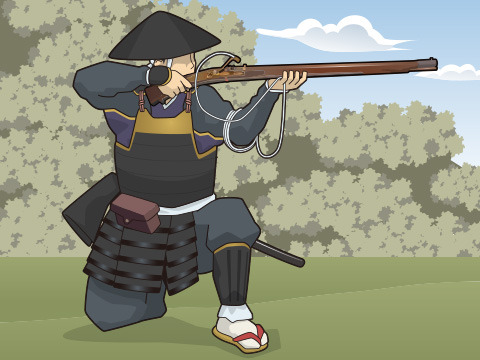

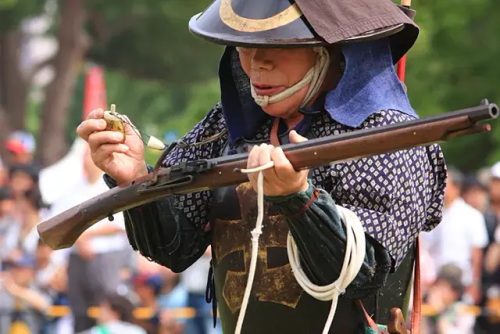
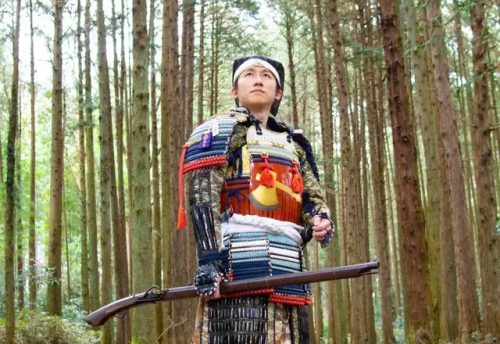
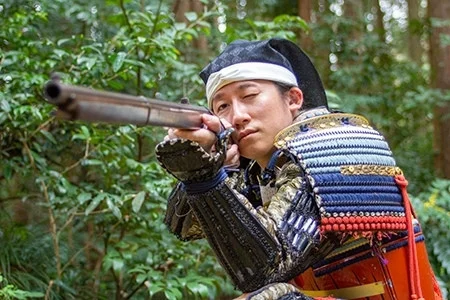

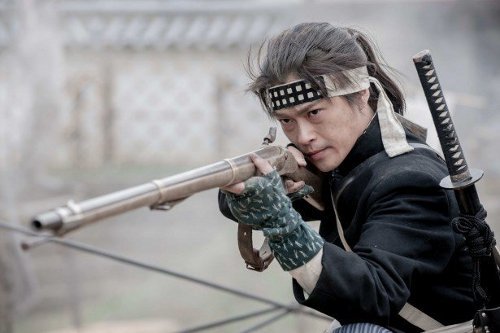
-
 rfpreiwaphase liked this · 10 months ago
rfpreiwaphase liked this · 10 months ago -
 bear-pattern-hamster liked this · 10 months ago
bear-pattern-hamster liked this · 10 months ago -
 repera23 liked this · 10 months ago
repera23 liked this · 10 months ago -
 hopefulkidshark liked this · 1 year ago
hopefulkidshark liked this · 1 year ago -
 vestaignis liked this · 1 year ago
vestaignis liked this · 1 year ago -
 ted-blogs-blog liked this · 1 year ago
ted-blogs-blog liked this · 1 year ago -
 vivencias-del-alma liked this · 1 year ago
vivencias-del-alma liked this · 1 year ago -
 artani liked this · 1 year ago
artani liked this · 1 year ago -
 margocooper liked this · 1 year ago
margocooper liked this · 1 year ago -
 rodolfo9999 liked this · 1 year ago
rodolfo9999 liked this · 1 year ago -
 myviper66 liked this · 1 year ago
myviper66 liked this · 1 year ago -
 hiromusicarts-blog liked this · 1 year ago
hiromusicarts-blog liked this · 1 year ago -
 sicks93 liked this · 1 year ago
sicks93 liked this · 1 year ago -
 merpmonde liked this · 1 year ago
merpmonde liked this · 1 year ago -
 noticiasarquelogicasjaponesas reblogged this · 1 year ago
noticiasarquelogicasjaponesas reblogged this · 1 year ago

238 posts